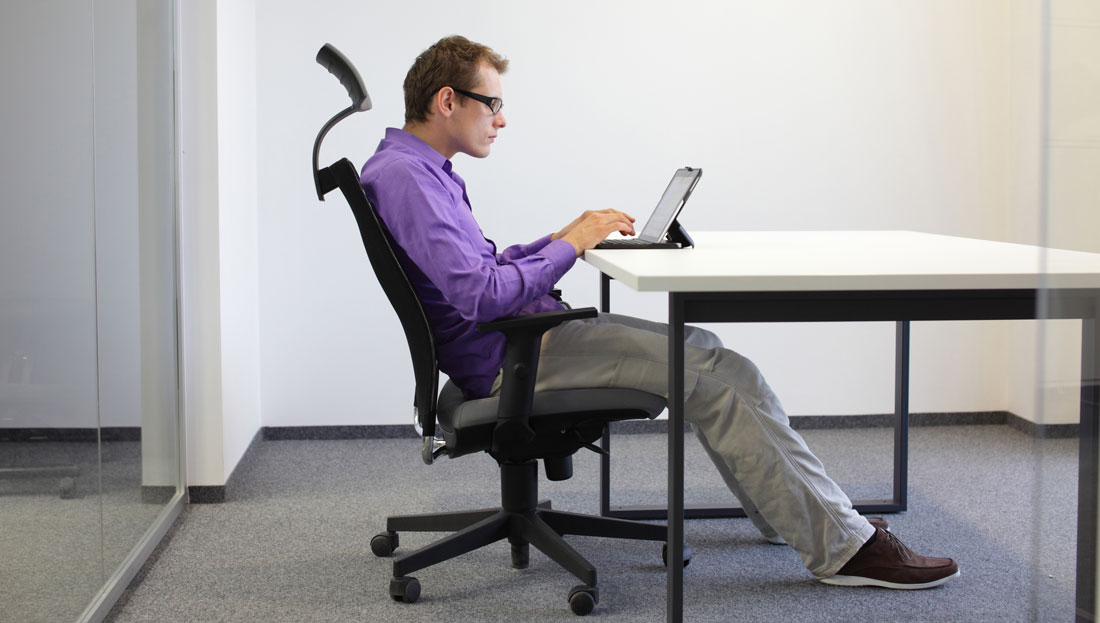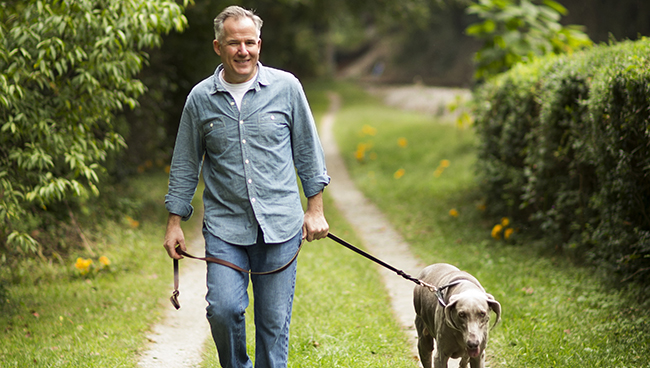
Stay-at-home orders. Gym and park closures. Mask requirements. The COVID-19 pandemic has been unprecedented and life-changing, with more than one billion people across the globe experiencing some form of confinement. For many people, these changes and others have led to an increase in sedentary behaviors. Simply put, people are now moving less and sitting more. This is significant because there is no shortage of scientific evidence highlighting the negative health consequences of spending too much time being sedentary. In fact, research suggests that life expectancy in the U.S. would be as much as two years longer if adults watched less television and sat for fewer hours per day.
But it’s not all bad news. There’s also considerable evidence demonstrating the positive benefits of reducing sedentary time. As a health and exercise professional, you are in a great position to help your clients find ways to stay active despite the current restrictions and limitations. Read on to learn practical tips and approaches you can use to help your clients reduce and limit sedentary behavior, even during a pandemic.
Sedentary Behavior vs. Physical Inactivity
First, let’s define a few terms. While sedentary behavior refers to too much sitting, physical inactivity signifies too little exercise. For example, an individual can be considered active according to the current physical-activity guidelines, but still spend too much time sitting in front of the TV. This is known as the “active couch potato” phenomenon. This term might describe, for instance, an office worker who participates in group exercise classes for 45 minutes every lunch break throughout the work week, but who spends the remainder of the day seated at their desk.
Sedentary behavior has been described as any behavior performed during the waking hours that elicits an energy expenditure less than or equal to 1.5 metabolic equivalents (<1.5 METs) while in either a sitting or reclining posture. Common forms of sedentary behavior include sitting for extended periods of time while watching television or working at a computer while seated at a desk.
Researchers are increasingly interested in whether individuals who fall within the active couch potato category are at increased risk for health problems. Indeed, one study concluded that total sedentary time was consistently associated with various unfavorable cardiometabolic biomarkers. Additionally, another study found that sitting for longer than a combined eight hours per day was linked to an increased risk of death from all causes, while sitting for more than six hours per day was associated with an increased risk of death from cardiovascular disease. And that’s after accounting for individual physical-activity levels.
The Importance of Behavior Modification
When working with a client, it is important that you understand the various factors that predict a lack of exercise. Similarly, you need to be aware of the considerations that might predict a sedentary lifestyle. With this knowledge, you can formulate appropriate strategies for helping your clients reduce the amount of time they spend being sedentary. In fact, the same behavior-modification strategies you might use to help clients increase physical activity could also be applied toward attenuating the amount of time they spend being sedentary. For example, the self-efficacy construct from the Social Cognitive Theory suggests that the use of self-monitoring and establishing realistic and measureable goals could be a viable approach to ensure initial success with reducing sedentary time. In particular, a daily log of sitting time could be used as a method of self-monitoring. Likewise, setting realistic and measurable goals might include limiting screen time to fewer than two hours each day or standing up and walking around the living room during each TV commercial break.
Additionally, ACE Certified Professionals now have an excellent resource and behavior-change guide to assisting clients—the ACE Mover Method. The ACE Mover Method centers on the concept that facilitating healthy lifestyle behaviors begins with empowering clients to take a personalized journey during which they achieve self-efficacy because the exercise professional or health coach practices empathy and trust, communication and collaboration. Through actionable steps, the ACE Mover Method offers a way for exercise professionals and health coaches to get people moving toward a better quality of life.
The following case study illustrates how the ACE Mover Method can help empower a client to move more and sit less throughout the COVID-19 pandemic.

ACE Mover Method Case Study: Move More and Sit Less During COVID-19
During a recent virtual discussion to determine the status of a client’s current goals and to decide what next steps will best align with their future vision, they let you know that they are concerned with the progress they are making. Over the past six months of the COVID-19 pandemic, they have been consistently walking around a local park for 45 minutes each day. While they were initially losing weight and feeling more fit, they are no longer getting the same results. In addition, they share that during a recent doctor’s appointment they brought up these challenges and were told by their physician that even though they have maintained their physical-activity levels over the past six months, they are still doing too much sitting. Their physician indicated that their total sedentary time might put them at risk for cardiovascular disease. Your client requested an online chat with you to establish some new goals to address their sedentary behaviors.
In this situation, the ACE Mover Method can be used to explore the differences between physical inactivity and sedentary behavior, while empowering the client to move forward with actionable steps for decreasing their sitting time. The ACE Mover Method can be implemented before, during or after a training session (in-person or virtually); it also is a time-efficient (e.g., five minutes) client-centered interaction that can favorably impact a client’s behavior-change journey.
Ask: Asking powerful open-ended questions during this exploratory conversation can help you confirm what the client already knows about the differences between sedentary behavior and physical inactivity. Here is an example of an initial question to ask:
Personal Trainer: In your perfect vision of your future self, what differences in your lifestyle would you like to see to address the sedentary behaviors your doctor mentioned?
Client: For the past half year, I thought I was doing enough to manage my health during the COVID-19 crisis, but in speaking with my doctor and reviewing my most recent blood work, I realized that even though I have become more physically active, I have not made significant changes to my overall lifestyle. At this point, I want to find ways to add more movement to my day-to-day life to reduce my total sedentary time.
Break down barriers: Ask more open-ended questions to find out what obstacles might get in the way of the client reducing the amount of time they spend sitting.
Personal Trainer: What is currently preventing you from adding more movement to your daily routine?
Client: I’ve just been so busy and stressed because of COVID-19. It’s been really challenging balancing my career, which now entails working from home, along with my home life. I’m always looking for reasons to relax. For me, this means sitting down. I honestly don’t know if I have the time to add more movement into my day.
Collaborate: Now that the client has expressed their wants (to reduce sedentary behaviors) and barriers (lack of time), the next step is to work together with the client on their goals and solutions.
Personal Trainer: I’m sure there was a time when it seemed like you were too busy to add 45 minutes of exercise to your daily work schedule and now you have maintained this goal for the past six months.
Client: That’s a good point. There was a time when I thought I could never add working out to my schedule, but here I am. I thought it was enough, but according to my doctor, it’s not.
Personal Trainer: On one hand, you feel as though you are doing enough, but on the other hand, you are surprised that your doctor said you need to do more to protect your long-term health. What options do you have available for moving more throughout your day?
Client: I do have a standing desk that I had used a few times previously—it’s in a storage closet at work. Perhaps I could set up a plan for using it more. I could go pick it up over the weekend and start using it next Monday in my home office since I’ll be here for the foreseeable future. Maybe I could also get in more walking throughout my day around our backyard during other preplanned breaks.
Personal Trainer: Those are both excellent ideas! The good news is that bouts of physical activity, of any length, can lead to health benefits. Being as specific as possible, how will you move forward?
Client: Starting tomorrow, I will use a timer to remind me to stand for five minutes each hour throughout my day. I will also determine some steps I can take to bring life back into the abandoned garden I have in my yard. I’ll use alarms on my phone to remind me to stand each hour or to take an activity break.
Practical Tips for Reducing Sedentary Behavior During COVID-19
1. Know the F.I.T.T. for reducing sedentary time.
The F.I.T.T. formula—which consists of frequency, intensity, time (duration) and type of exercise—is commonly used to design exercise-training programs. The same approach can be applied to designing a program for reducing sedentary time. Table 1 outlines F.I.T.T. recommendations for helping clients reduce their sedentary behaviors.
Table 1. F.I.T.T. for Reducing Sedentary Time
|
Program Component
|
Component Recommendation(s)
|
|
Frequency:
|
- During sedentary activities (such as working at a desk or watching TV), take movement breaks at least every 60 to 120 minutes.
- Substitute light-intensity activities for sedentary time whenever possible; this might include using a standing desk or walking around during phone calls.
|
|
Intensity:
|
- Movement breaks should consist of light-intensity activities such as walking at a leisurely or slow pace, light household chores (e.g., making the bed, ironing, washing dishes, cooking or preparing food, or folding laundry), standing while working or talking on the phone, playing an instrument, doing arts and crafts, mild stretching, watering plants or playing with pets.
- Light-intensity equates to >1.5 to <3.0 METs
|
|
Time (duration):
|
- Limit overall leisure sitting time to no more than two hours per day.
- Movement breaks should last about five to 10 minutes.
|
|
Type:
|
- Movement breaks could include routine household and occupational tasks
- Whenever possible, modify the environment to limit sitting; for example, remove chairs from the TV area or position computers at a standing height.
|
2. Identify the specific areas where sedentary behavior is a problem.
When talking with your clients about how to reduce their sedentary time, it is important to identify the actual areas where sedentary time is problematic. For example, a client may have a new work-from-home job due to COVID-19 that requires them to spend long hours sitting at a desk throughout the workweek. In this instance, recommending that they switch to a walking treadmill desk might make sense. In contrast, another client may report getting after work and spending several hours each evening watching TV or on the computer after work. Figuring out how to manage the home environment (specifically during the evening hours) to discourage sedentary behavior would be a more effective approach for this client. Clearly, it’s important to match the recommendations for limiting sedentary time to the specific troublesome areas for each individual client.
3. Leverage online and virtual content.
Throughout the lockdown, fitness centers and recreation facilities across the nation have been posting free online workout routines and other content to help people move more and sit less while at home. I have strongly encouraged both my clients and fellow health and exercise professionals to take advantage of this virtual content. In addition to CERTIFIED, ACE has made available a considerable amount of online content focused on helping health and exercise professionals successfully pivot and adjust to the current new normal.
4. Help children and the elderly to regularly sit less.
Over the past six months, it has been my experience that two of the most vulnerable populations during the COVID-19 pandemic, with respect to increased sedentary time, are children and the elderly. Personally, there has been a marked rise in the amount of time my own children are spending in front of screens—a rise that has been difficult to curtail. One approach that has worked in our household is substituting fun activities and games for screen time. And for those times when they do play video games, fitness or sports games with motion sensor controls that require increased movement have been good options because they ultimately help to interrupt sedentary time.
Similarly, it takes a concerted effort to ensure our elderly friends, family members and clients are minimizing sedentary time. Several strategies have been effective for helping seniors within our community. First, we try to help our elderly clients identify a list of light-intensity activities that are available and enjoyable to perform within their own households (refer to the examples given in Table 1). Next, we collaborate with them on compiling a daily menu (just like meals) of these activities (or sedentary interruption bouts) for them to “snack” on, including when and for how long to perform each activity. Lastly, we assist them with finding the right type of technology (e.g., activity trackers and smartphone apps) that will provide them with the necessary reminders to ensure they are regularly sitting less.
Americans are experiencing an unprecedented, life-altering challenge due to the COVID-19 pandemic that has worsened the already-existing crises of inactivity and sedentary behavior. Fortunately, as a health and exercise professional you are perfectly positioned to play a vital role by introducing these behavior-change strategies to your clients and helping them find innovative ways to “move more and sit less” throughout these extraordinary times.
Expand Your Knowledge

Anti-sitting Strategies for Your Clients
A growing body of research suggests that excessive sitting is associated with numerous negative health risks. Learn how you can educate your clients about the negative effects of prolonged sitting and also provide them with specific strategies to help ensure that they have the knowledge and skills to move closer to their specific health and wellness goals.

ACE-sponsored Research: What is the Optimal FIT to Reduce Sedentary Behavior to Improve Cardiometabolic Health?
You’ve undoubtedly told your clients with predominately sedentary jobs to try to move around during the day, to get up and stretch or walk around the block. But is that really enough to combat the negative effects of prolonged sitting? In this ACE-sponsored study, researchers set out to identify the optimal FIT (frequency, intensity and time) for reducing sedentary behavior to improve cardiometabolic health in middle-age and older adults.

Behavior Change Specialist Program
Any fitness, healthcare or allied health professional who wants to effectively guide their clients to their goals will benefit from this specialization. You will gain crucial communication skills to foster effective client-coach relationships and will learn cognitive behavioral coaching to help your clients reach their potential. Upon completion of the program, you will own critical skills that will elevate your profile as a health and exercise professional.





 by
by 






